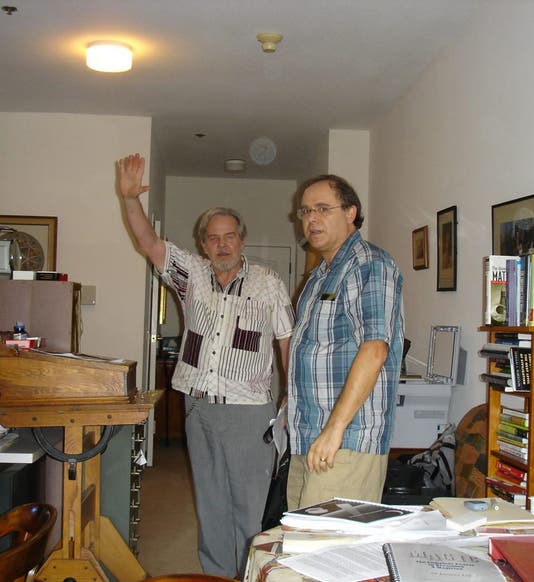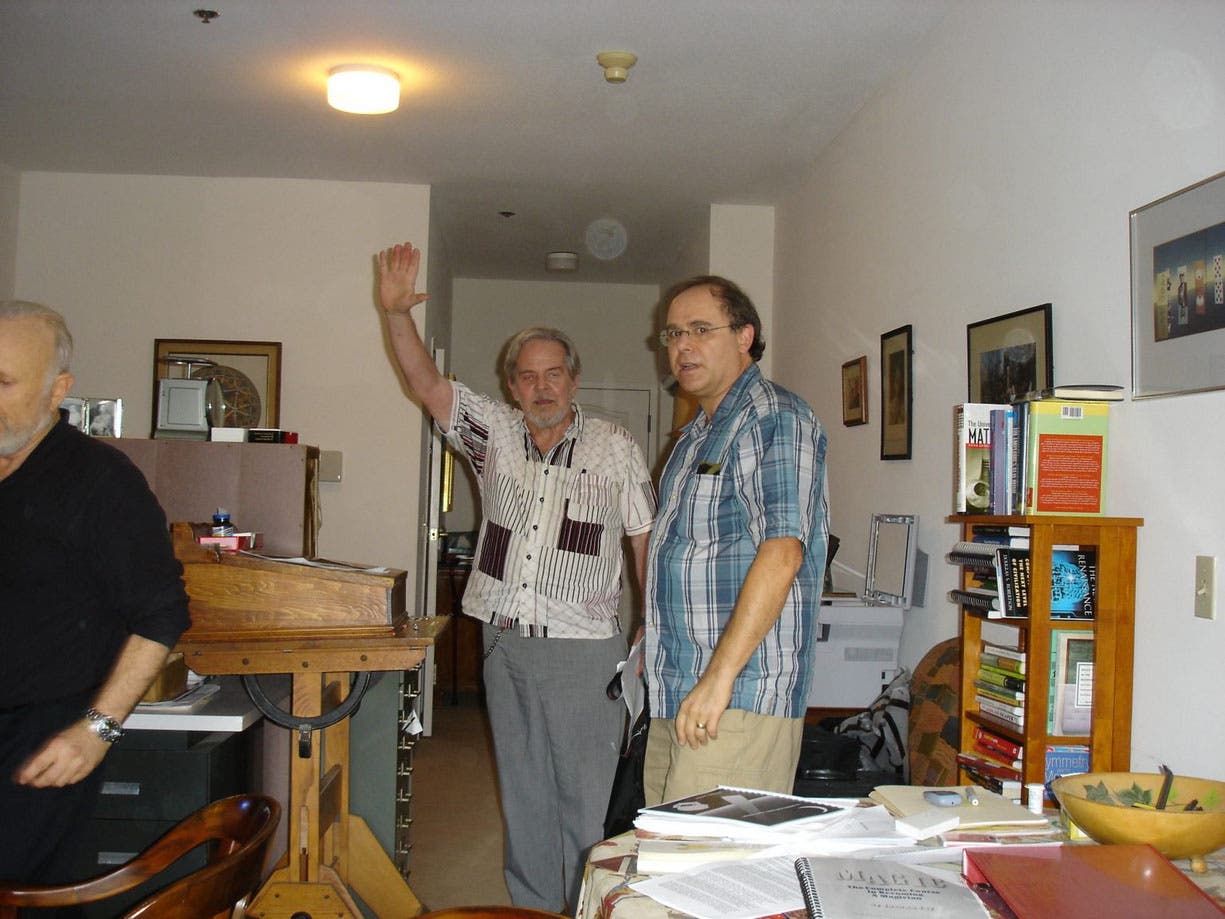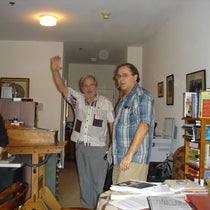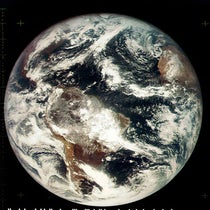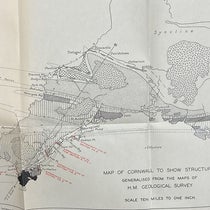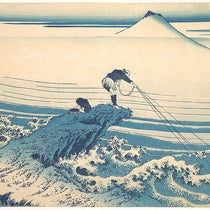Scientist of the Day - Jeremiah Farrell
Jeremiah Farrell, a mathematician, recreational mathematician, and puzzler, was born on Dec. 12, 1937, in Hastings, Nebraska. He attended the University of Nebraska, earned a degree in mathematics, and then landed a position at Butler University in Indiana, where he taught for some 40 years before retiring in 1994, and for some years after that.
Farrell was fond of mathematical puzzles and games, so it is not surprising that he was a big fan of Martin Gardner's monthly "Mathematical Games" column for Scientific American, which we wrote about just last month. I do not know when or how Farrell met Gardner, but he did, and after Gardner retired and was disappearing from the public eye, Farrell and a few others organized in 1993 a Gathering for Gardner (G4G), an invitation-only convention of Gardner admirers, at which Gardner himself was the guest of honor. This became a biennial affair and is still going on. The 16th Gathering (G4G16) will convene in San Francisco this coming February, and you can find out more about it by googling G4G16.
That said, this is not how Farrell made his name in the world. He did so by constructing a crossword puzzle that he submitted to Will Shortz, puzzle editor at the New York Times, suggesting that it might run on this day, Nov. 5, 1996. Shortz enthusiastically agreed, and the puzzle was published on Election Day, 1996. It is probably the most famous, and most widely acclaimed, crossword puzzle in history.
If you are a crossword puzzle fan and have never done the "Election Day" puzzle, you should quit reading immediately and go find it, and do not return to this post until you have done it. If you are a serious puzzler, you probably subscribe to NYT Games, and you can find the puzzle in the archives for Nov. 5, 1996. For the rest of you, who do not do daily crosswords, I will try to explain what makes Farrell's puzzle so special.
The puzzle has two 7-letter blanks across the middle, with the single clue, "Lead story in tomorrow's newspaper.” There are two possible solutions: "Clinton elected" or “BobDole elected." If you choose Clinton, then the 7 cross-words – the vertical words that intersect Clinton – are Cat ("Black Halloween animal"), Lui, IRA, Yarn, Bits, Boast ("Trumpet"), and NRA. Should you enter BobDole in 39 across instead of Clinton, then the cross-words turn out to be: Bat, Oui, Bra ("Provider of support"), Yard, Bios, Blast, and ERA ("Much-debated political inits."). The puzzle has two different solutions and so indeed successfully predicted the next day's headline story. At this link, you can see the Election Day puzzle filled out, blinking alternately between the two solutions, with the clues beneath.
Even if you have never tried to construct a crossword puzzle, you can probably appreciate that it is hard enough to come up with a single solution for one set of clues; to come up with two different solutions for one set of clues is the stuff of legends, which is how Jeremiah Farrell became a legendary figure in crossword circles.
From 2006 to 2020, Jarrell was the editor of Word Ways, a quarterly journal/magazine devoted to wordplay. The magazine went into hiatus in 2020, perhaps because of Farrell’s poor health. He passed away on July 4, 2022, at the age of 84. I could find no photographs of Farrell as he would have looked when the Election Day puzzle was released (he would have been 59). The only photos posted show him at some of the later G4G meetings; I used one of those for our one and one image today.
William B. Ashworth, Jr., Consultant for the History of Science, Linda Hall Library and Associate Professor emeritus, Department of History, University of Missouri-Kansas City. Comments or corrections are welcome; please direct to ashworthw@umkc.edu.

